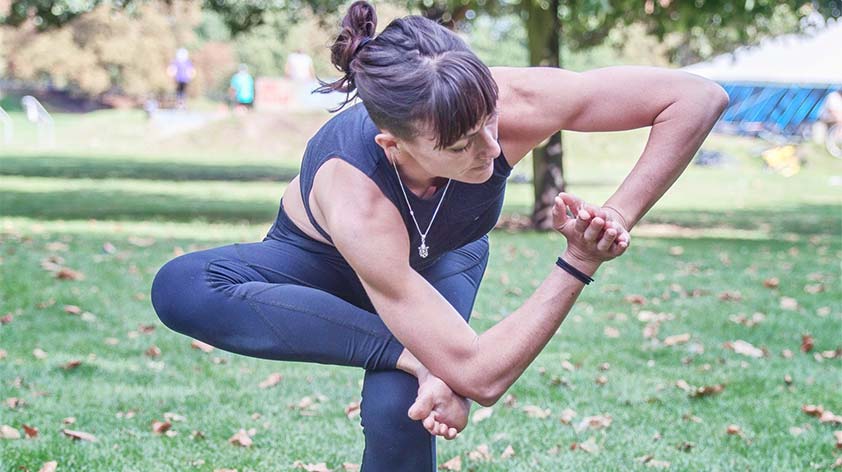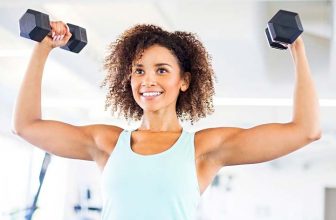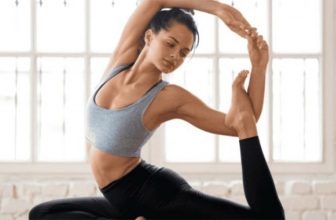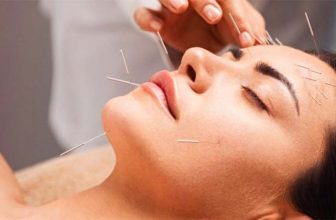
Chair pose The Sanskrit name ‘Utkata’ means ‘fierce’, ‘proud’, ‘immense’ or even ‘difficult’. “The Ramayana” (the epic Indian story of Lord Rama), is among the most esoteric stories, or spiritual poems, dealing with Lord Rama’s mission to rescue his wife Sita and to return to his royal kingdom, Ayodhya. So the origins of this yoga pose is thought to broadly be about regaining the throne, or chair.
Modern living, especially in western society, means the majority of people utilise chairs by default in everyday life with a more functional purpose as opposed to identifying status. Consequently, the ‘height’ of this pose has been modified considerably as our mobility range has become less and less. Not a good sign for ageing and early onset arthritis! Want to learn to avoid such hassles? Then read on for Yoga: Chair Pose (Utkatasana) — Top 5 Health Benefits!
The English translation ‘chair pose’ somewhat contradicts the notion of this pose by suggesting the simple idea of sitting on a chair (an imaginary one in this case) which might actually be considered to be some form of exercise. Don’t fall into that trap!
The idea of attempting to sit at the lowest position that you can with your legs together, ideally level with the hips, is certainly more challenging than just sitting down on a chair and actually requires a fair amount of strength across the whole body. During the 19th century in India, this pose was even more demanding with the hips sitting down lower toward the heels and it was named ‘Sritattvanidhi’. It started like this as it was more common to sit on the floor, only the royals would be elevated on chairs so they could be seen and connect with their ministers and community.
In fact, there are now 85 variations of this pose to cater to everyone which can sometimes cause confusion as to what the correct version of Utkatasana actually is. In truth, there is not really a right or wrong version per se, as long as it makes sense for the person practicing, but the traditional version was introduced to Hatha and Ashtanga yoga sequences to develop certain advantages.
1. Stimulation of Abdominal Organs, Diaphragm & Heart
Deep pelvic floor muscles are stimulated to maintain the crouching position as well as the upward stretching position of the arms and back. This activation pulls the Uddiyana and Mula Bandha (energy sources) in and up which in turn compresses and stretches the abdominal organs. This compression challenges the diaphragm and circulatory system to the heart. This part of the pose is like a self-massage of the digestive system!
2. Reduces Flat Feet
The demanding angle of the ankle and retained crouching position of the pose awakens and strengthens the arches of the feet and therefore aids in the improvement of weak arches or symptoms of flat feet.
3. Strengthens Shoulders & Arms
The internal rotation of the arms and the stretching sensation upward demands strong muscle activation as well as shoulder stability in order to hold the position of the back and the seated expression of the pose.
4. Strengthens Hip Flexors, Ankles, Calves & Back
The need for extension through the back and a held crouching position, demands strong stimulation and isometric contraction of the muscular position in the legs. Therefore the hip flexors are very active here for the duration of the pose as are the muscles of the back which maintain the upward tuck of the tail bone.
The ankles are also holding a deep angle whilst the calf muscles maintain their length in the crouched position reinforcing the strengthening aspects of this pose.
5. Tones Leg Muscles
The muscles in the legs are forced to work, especially the inner thighs, to maintain the closed-leg position. This semi-squat position stimulates the activation of the glutes and the thighs, igniting a sense of balance in the pose whilst demanding consistent contraction – this tremendously tones the leg muscles.
Utkatasana should be avoided if you’re suffering from insomnia, low blood pressure or headaches if possible, but overall, Utkatasana is a very strong pose and can help you immensely to build a solid foundation of strength for many, many other yoga sequences as well.
Do you practice the Utkatasana or chair pose? What’s your favourite yoga move and what benefits have you felt? Let us know in the comments below and join in the conversation on Facebook, Twitter & Instagram. Click for MORE YOGA!









